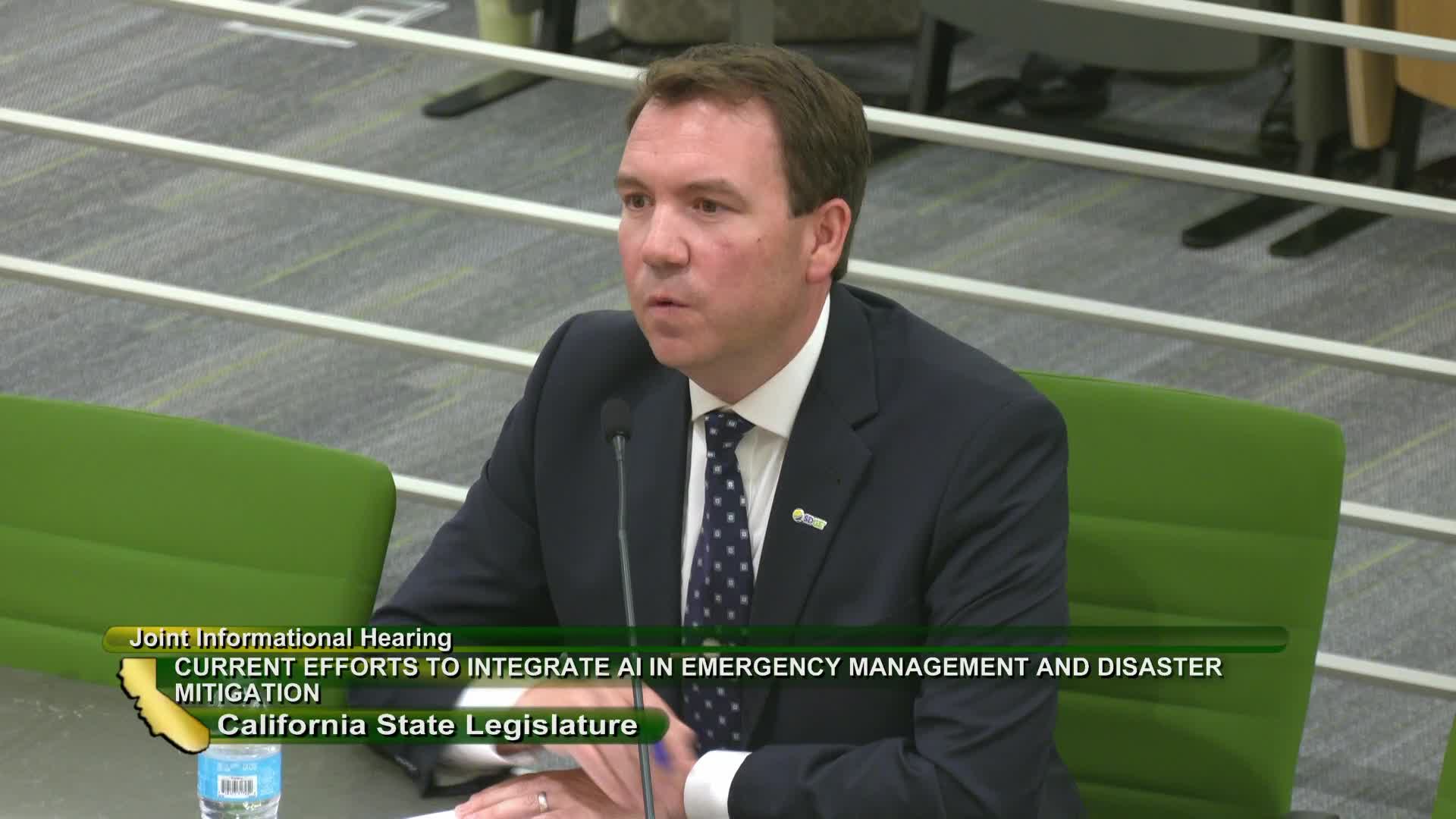Innovative AI technology tackles critical infrastructure risks
August 05, 2024 | California State Assembly, House, Legislative, California

This article was created by AI summarizing key points discussed. AI makes mistakes, so for full details and context, please refer to the video of the full meeting. Please report any errors so we can fix them. Report an error »

In a recent government meeting, discussions centered on the critical need for advanced monitoring of infrastructure to mitigate risks from natural disasters, particularly in light of increasing climate-related threats. Key insights were shared regarding the use of camera networks and drone technology to assess and manage risks to vital infrastructure, especially in regions prone to wildfires and extreme heat.
One speaker emphasized the importance of early detection of fires near critical infrastructure, noting that the loss of major transmission corridors during high load scenarios could significantly stress the electric system. The integration of artificial intelligence in risk modeling has allowed for a more precise identification of high-risk areas, enabling proactive measures to be taken.
Ahmed Ahmed Juani, CEO of One Concern, highlighted alarming statistics regarding the financial impact of climate risks on U.S. corporations, which faced over $100 billion in uninsured business interruption losses in 2023. Despite this, many companies failed to recognize physical risk as a material concern in their disclosures. Juani pointed out that while a vast majority of listed companies and government infrastructure are not located in high hazard zones, they are still vulnerable to externalities such as power outages and supply chain disruptions during disasters.
Juani's company has developed a sophisticated model to analyze the interconnectedness of infrastructure, likening it to a spider's web that illustrates how disruptions can lead to cascading effects across systems. This approach has been successfully implemented in Japan, where it helped prioritize emergency infrastructure budgets following the Fukushima disaster.
The meeting underscored the urgent need for improved data collection and analysis to enhance resilience against climate-related risks, with a focus on understanding the dependencies within critical infrastructure systems. As climate change continues to pose significant challenges, the integration of technology and innovative risk assessment methods will be crucial in safeguarding communities and ensuring the reliability of essential services.
One speaker emphasized the importance of early detection of fires near critical infrastructure, noting that the loss of major transmission corridors during high load scenarios could significantly stress the electric system. The integration of artificial intelligence in risk modeling has allowed for a more precise identification of high-risk areas, enabling proactive measures to be taken.
Ahmed Ahmed Juani, CEO of One Concern, highlighted alarming statistics regarding the financial impact of climate risks on U.S. corporations, which faced over $100 billion in uninsured business interruption losses in 2023. Despite this, many companies failed to recognize physical risk as a material concern in their disclosures. Juani pointed out that while a vast majority of listed companies and government infrastructure are not located in high hazard zones, they are still vulnerable to externalities such as power outages and supply chain disruptions during disasters.
Juani's company has developed a sophisticated model to analyze the interconnectedness of infrastructure, likening it to a spider's web that illustrates how disruptions can lead to cascading effects across systems. This approach has been successfully implemented in Japan, where it helped prioritize emergency infrastructure budgets following the Fukushima disaster.
The meeting underscored the urgent need for improved data collection and analysis to enhance resilience against climate-related risks, with a focus on understanding the dependencies within critical infrastructure systems. As climate change continues to pose significant challenges, the integration of technology and innovative risk assessment methods will be crucial in safeguarding communities and ensuring the reliability of essential services.
View full meeting
This article is based on a recent meeting—watch the full video and explore the complete transcript for deeper insights into the discussion.
View full meeting
